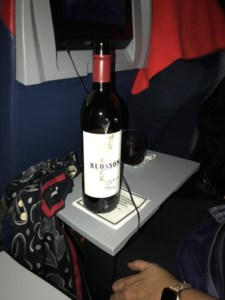About 2 years ago, we started planning a trip to Miyazaki, Japan, where arguably, the finest full-blooded wagyu beef in the world is produced. The collection of Japanese Wagyu Beef Olympic Gold Medals from this prefecture bears this out.
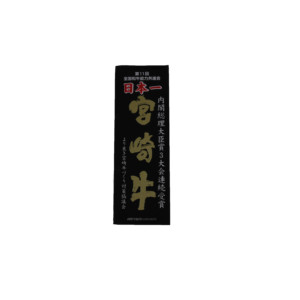
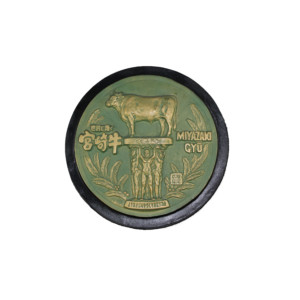
Unfortunately, a product demanding these prices, make it prime for fraud, which is prevalent. You are paying for the highest grade, but are you really getting the highest grade? The documents and certificates that accompany each of our orders are issued by the Japanese government. They are not created by an exporter, importer or distributor. These official documents ensure that you will never fall victim to this fraud. Plus, it’s very impressive for the servers to show the documents to your guests in the dining room.
Our adventure began with one very long plane trip from Orlando, to a small, quaint little town in central Japan known as Tokyo. Okay, not really. Manhattan has a population of about 1.6 million people, Tokyo has about 14 million. I think I saw more people in the first two days there than I had seen in my entire life.
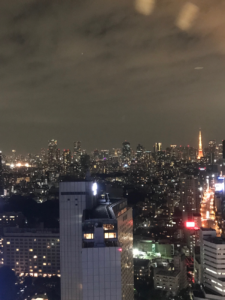
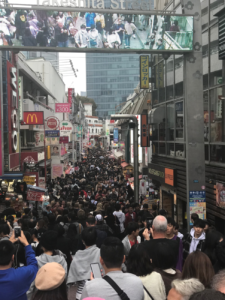
We were accompanied by a representative from our Wagyu beef partner who spoke fluent Japanese and English. Essential, at least for the first few days, to learn how to get around. Tokyo is very clean, well-organized and HUGE! The people are extremely friendly, the mass transit system is extremely convenient and easy to use and, did I mention, the place is HUGE!
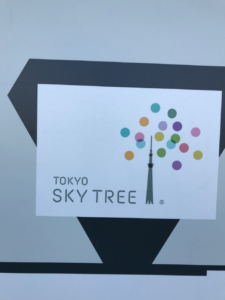
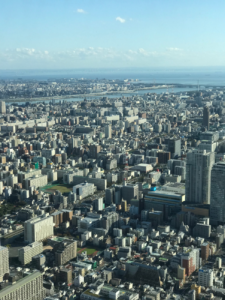
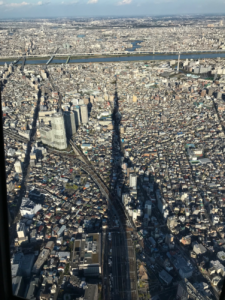
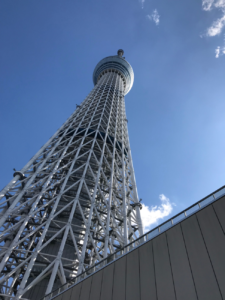
Then there’s the food. If you like sushi, then you should not eat it in Tokyo, because you’ll probably never want to eat it anywhere else ever again. For someone who enjoys and appreciates good food, I believe when you die, if you were good, you go to Tokyo.
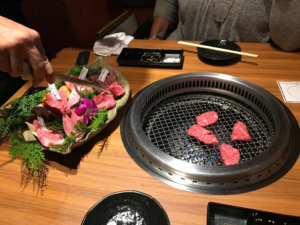
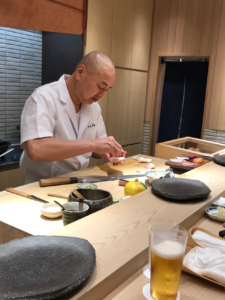
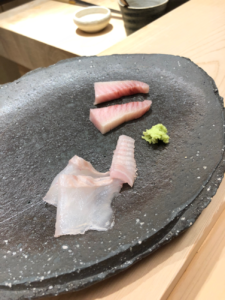
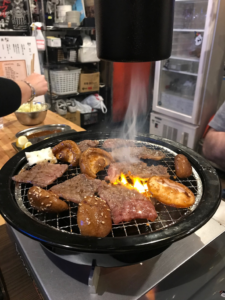
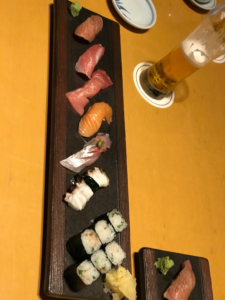

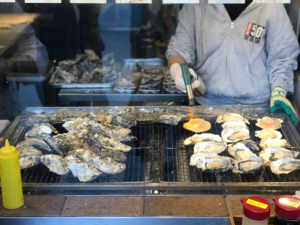

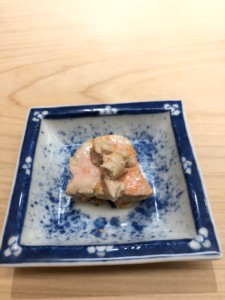
After about a day and a half in Tokyo, we flew south to the Miyazaki Bougainvillea Airport, no kidding, that’s its name. They have a big Bougainvillea Festival every year. Miyazaki is an agricultural prefecture producing fruits, vegetables, and of course, God’s greatest gift to humanity, Miyazaki Wagyu Beef. (I invite you into a moment of silence here.)
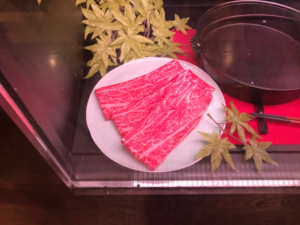
I wanted so badly to see a farm where these magnificent animals are raised. I’ve heard and read so much about the farms, how the animals are raised, treated, and the great and extreme lengths taken to avoid any kind of stress. It was my primary purpose for making this tremendous journey. Well, when we got there, we were told we could not go to a farm. The reason being, I would look unfamiliar to the animal, and possibly stress them, so the answer is “iie,” no. Wow, right? That’s intense! By the way, there are at least ten words that are used for varying degrees of “no” in Japanese.
In the way of a history of these wonderful animals, they were initially bred to pull plows in the rice paddies and carry wood down from the mountains. Well, tractors and technology eliminated the need for animals to be doing this work in the mid-1800s, so they became a food source. Once they became a food source, the Japanese did with it what the Japanese do, they strived to improve it, and do so to this day. They have a word for it, in the Japanese language, “kaizen”, which means: constant improvement. From the intensity of the genetic studying and planning to the meticulously detailed feeding protocols and the obsession with eliminating any and all stress, they have created one of, if not the, most marvelous, rich, and special meats in the world.
This is one of the processing facilities (I have seen hospitals that aren’t as clean as that place).
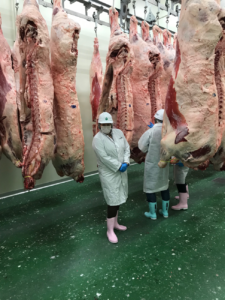
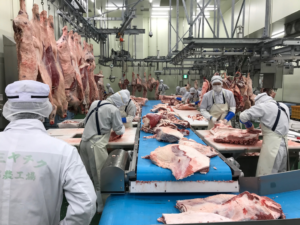
We got to look at A5 carcasses right next to A4 carcasses and see the differences in the “feathering” of the fat in the muscle, the size of the fat cap, the color, and the firmness of the fat all the way through the ribeye down into the belly. Each of the half carcasses is worth as much as a small car.

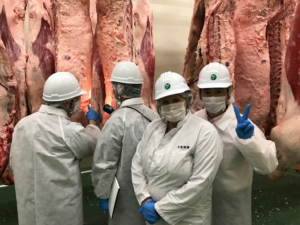
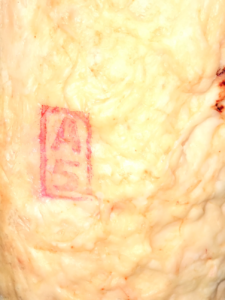
The skill level of the butchers is extremely high. This is a video of a butcher pulling a tenderloin. That is $600 to $700 piece of meat. It must be removed flawlessly, which it was, but the speed at which it was done was jaw-dropping.
It’s about 6 pm, so most everyone has gone home, and we’re walking from one building to another. A farmer drives up in his truck to the back to drop off two of his animals. I thought for sure we were going to be told to get lost, but we weren’t. We were 20 feet away, check out this video. I thought I was going to cry! I have to believe that very few people ever get to experience anything like this, particularly from the US. These 14 seconds alone made the entire trip worthwhile. For as long as I live, I will never forget those 14 seconds.
Here’s a poorly shot pic of a spectacular Miyazaki sunset.
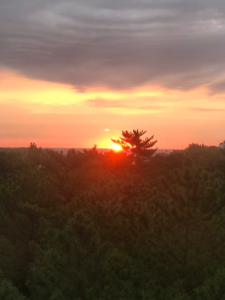
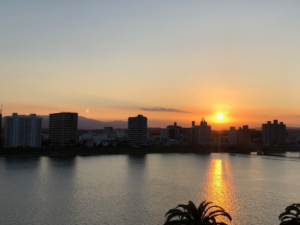
The dinner that night was at a restaurant owned by the company, and guess what we ate? That’s right, Miyazaki Beef, for nearly every course. It was the culotte, the tri-tip, the sirloin, the top round, and on, to compare taste and texture. It was truly fascinating, a once in a lifetime experience.
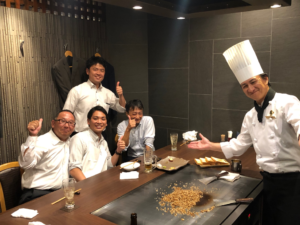

The next day was visiting a few Miyazaki prefecture offices, to meet government officials. The prefecture government, as well as the Japanese government, and a good many different business interests, own the processing facility together. The prefecture government officials were very grateful to us for selling the Miyazaki beef.
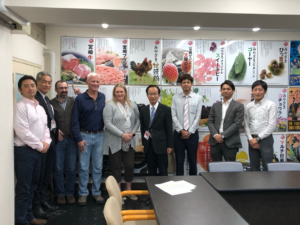
The dinner that night was a barbecue on the beach with, you guessed it, more Miyazaki beef! Grilled, sushi-style, several other different ways, and all, just amazing!
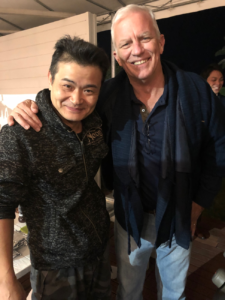
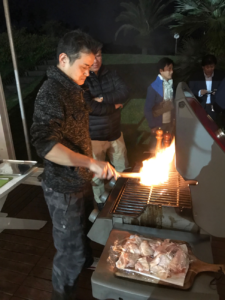
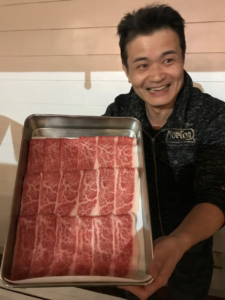
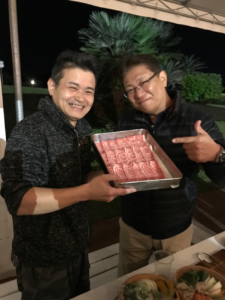
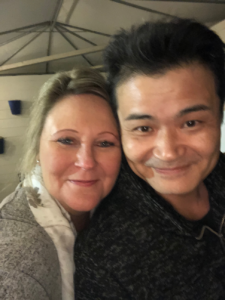
We left our travel companions and many new friends in Miyazaki the following day. We traveled via train to Hiroshima, Kyoto, Osaka, and finally back to Tokyo. We spent the day at Tokyo Disneyland. We had to, right? It was also excellent and spectacular.
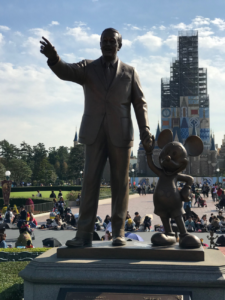
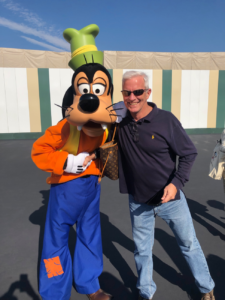

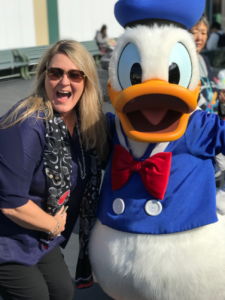
Along the way, we had some truly amazing meals, saw temples and shrines that were thousands and thousands of years old and experienced a culture so rich in tradition. It was like nothing we’d ever seen! We experienced a beautiful and gracious people. Even though there was obviously a language barrier, and most communication had to go through a translator, we made real connections and real friendships. They are amazing people and have an equally amazing culture.
I highly recommend a trip, get a guide for the first few days and allow at least a week when you get back to get over the jet lag. It is without question, the best trip I have ever taken. My wife and I consider ourselves richly blessed to have had this opportunity. Please go, you will not regret it!
So now, when I taste a piece of Miyazaki wagyu, I don’t taste just an incredible piece of beef, I taste a huge story and tradition that went into, and continues to go into, it’s creation.
